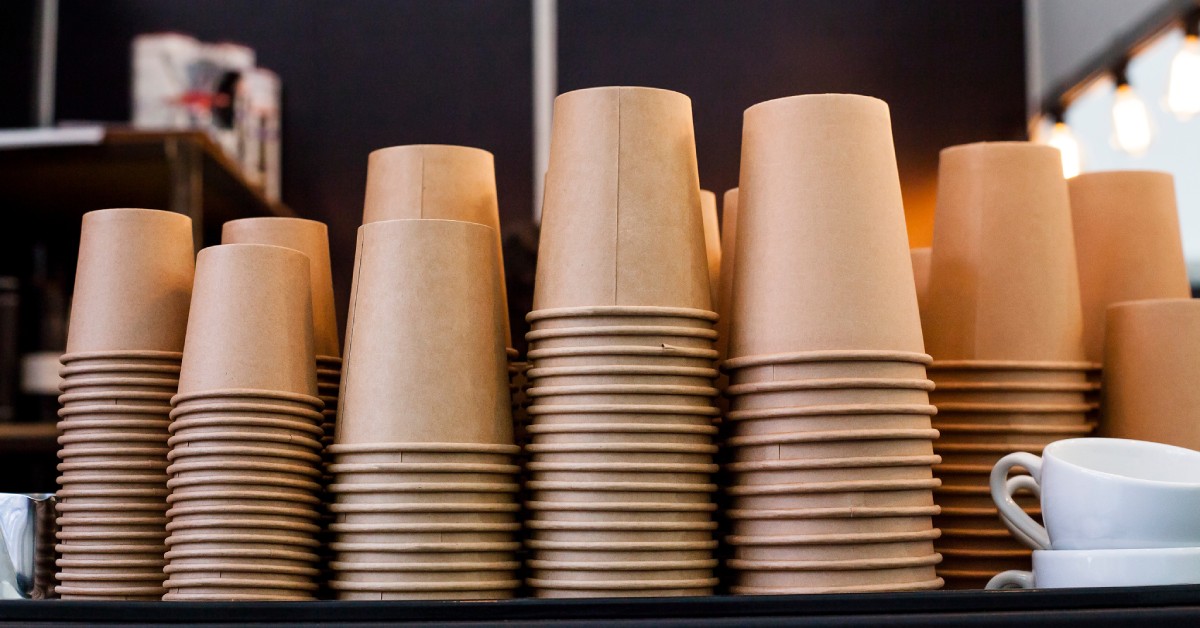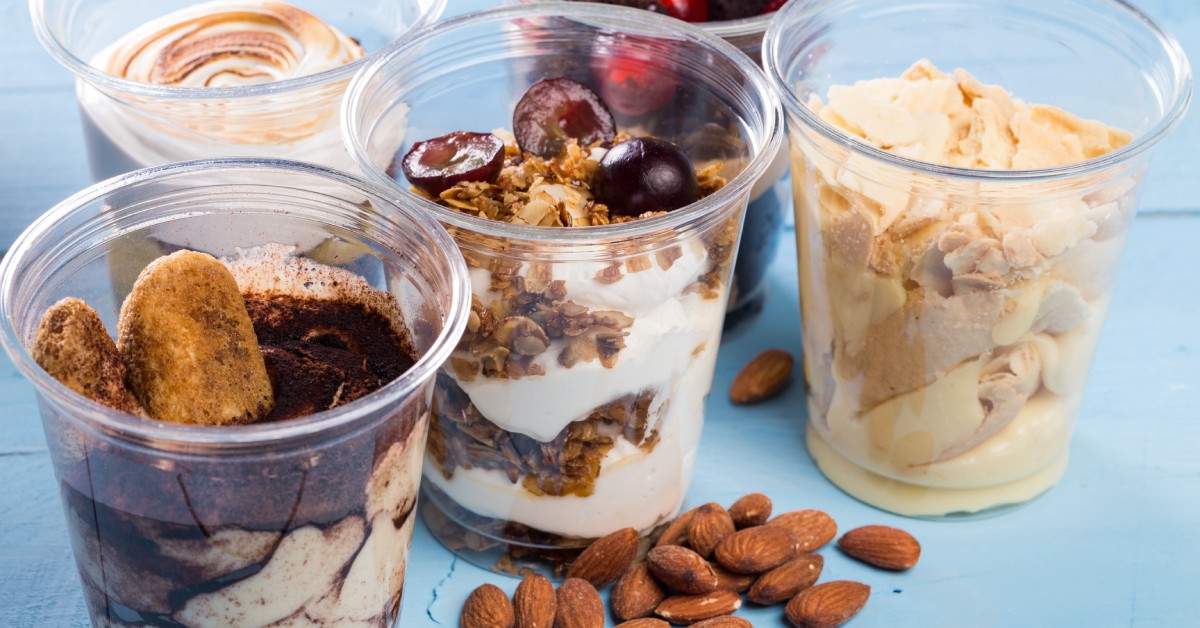Plastic vs. Paper: The Pros and Cons of Single-Use Cups
Single-use cups are a staple in many food and beverage industries, offering convenience and practicality. However, the debate between plastic and paper cups continues as businesses and consumers consider environmental impact, cost, and functionality. Read on and find out the pros and cons of single-use cups with plastic and paper compositions.
Environmental Impact of Plastic Cups
Plastic cups, especially those consisting of PET (polyethylene terephthalate), are recyclable and can become new products. However, the recycling rate for plastic cups is relatively low, leading to some waste. While PET cups are lightweight and durable, their long decomposition time in landfills is an environmental concern. Efforts to improve recycling infrastructure and consumer awareness can help mitigate these issues.
Environmental Impact of Paper Cups

People often perceive paper cups as more environmentally friendly than plastic because they’re biodegradable and derived from renewable resources. However, most paper cups have a thin layer of plastic lining them to prevent leaks, complicating the recycling process. Specialized recycling facilities are necessary to separate the plastic lining from the paper, limiting their recyclability. Despite this, paper cups decompose faster than plastic in landfills.
Manufacturing Processes: Plastic Cups
The production of plastic cups involves the extraction and processing of petroleum, which has a high environmental footprint. However, advancements in manufacturing have led to more efficient processes, reducing energy consumption and emissions. Additionally, PET plastic can consist of recycled materials, further decreasing its environmental impact. Innovations in production aim to make plastic cups more sustainable over time.
Manufacturing Processes: Paper Cups
Producing paper cups requires large amounts of water and energy and involves the cutting down of trees, potentially impacting forests and wildlife. However, the paper industry is moving toward more sustainable practices, such as using recycled paper and certified sustainable wood sources. The manufacturing process still generates greenhouse gases, but improvements in technology are helping to reduce the overall environmental footprint.
Cost Efficiency: Plastic Cups
Plastic cups are generally more cost-effective than paper cups due to lower raw material costs and efficient manufacturing processes. Their durability and lightweight nature also reduce shipping costs. For businesses, the lower price point of plastic cups can lead to significant savings, especially when purchased in bulk. This cost-efficiency makes plastic cups a popular choice in the food-service industry.
Cost Efficiency: Paper Cups
Paper cups tend to be more expensive than plastic cups because of the materials and complex manufacturing processes involved. However, the growing demand for eco-friendly products can sometimes justify the higher cost. Businesses aiming to project an environmentally conscious image might find the investment in paper cups worthwhile, even if it impacts their bottom line. Economies of scale and advancements in production technology are helping to narrow the cost gap.
Durability and Functionality: Plastic Cups

Plastic cups are highly durable and resistant to damage, making them ideal for both cold and hot beverages. They don’t degrade when exposed to liquids, maintaining their structural integrity. This durability ensures that plastic cups can withstand various conditions without leaking or becoming misshapen. This makes them a reliable option for consumers and businesses alike. Their transparency also enhances the visual appeal of the beverages they hold.
Durability and Functionality: Paper Cups
Paper cups are generally sturdy but can weaken if exposed to liquids for extended periods. The plastic lining helps prevent leaks, but it can also cause the cup to lose its shape if the lining separates from the paper. Despite this, paper cups are effective for single-use purposes, particularly for hot beverages. Their insulation properties can keep drinks warm longer, adding to their functionality.
Consumer Preferences: Plastic Cups
Many consumers prefer plastic cups for their clarity and durability, especially for cold drinks. The ability to see the beverage inside can enhance the drinking experience, making it more visually appealing. Plastic cups also have an association with convenience and reliability, which are important factors for on-the-go consumers. Their versatility and practicality make them a preferred choice in many settings.
Consumer Preferences: Paper Cups
Eco-conscious people often favor paper cups because they work well with hot beverages. Their tactile feel and ability to insulate hot drinks make them popular in coffee shops and other settings that serve hot beverages. The perception of being more environmentally friendly also appeals to consumers who prioritize sustainability. Branding opportunities on paper cups can enhance their appeal to businesses looking to make an impression.
Customization and Branding: Plastic Cups
Plastic cups offer excellent opportunities for customization and branding. High-quality printing techniques can produce vibrant, eye-catching designs that enhance brand visibility. Businesses can use plastic cups to promote their brand, special events, or new products. Plastic’s durability ensures that the printed designs remain intact, providing a consistent brand image throughout the cup's use.
Customization and Branding: Paper Cups
Paper cups also provide good branding opportunities, with the added advantage of a larger surface area for printing. The texture of paper allows for various printing techniques, including eco-friendly inks, to create appealing designs. Businesses can use paper cups to reinforce their brand message and appeal to eco-conscious consumers. The ability to print detailed and colorful designs can make paper cups a powerful marketing tool.
Recycling and Disposal: Plastic Cups
Recycling plastic cups, particularly those consisting of PET, is feasible but requires proper infrastructure and consumer participation. PET cup lids, for example, are recyclable along with the cups themselves, reducing overall waste. Educating consumers on proper disposal methods and improving recycling facilities can enhance the sustainability of plastic cups. Initiatives to increase recycling rates are essential for reducing their environmental impact.
Recycling and Disposal: Paper Cups
The recycling process for paper cups is more complex due to the plastic lining, requiring specialized facilities. However, advancements in recycling technology are improving this process’s efficiency. Compostable paper cups are emerging as a viable alternative, offering easier disposal options. Encouraging consumers to dispose of paper cups properly and supporting composting programs can enhance their environmental benefits.
The Role of PET Cup Lids
PET cup lids complement plastic cups, providing a secure and recyclable solution for covering beverages. These lids are durable, transparent, and recyclable, aligning with the benefits of PET plastic cups. Using PET cup lids means that people can recycle the entire cup and lid assembly together, simplifying the disposal process. Offering PET cup lids as part of your packaging solution can enhance the sustainability and functionality of your beverage service.
Now that you know the pros and cons of plastic vs. paper single-use cups, you can make an informed decision that best suits your needs. While both options have their advantages and drawbacks, understanding their environmental impact, cost efficiency, and durability is crucial. Whether you opt for the durability of plastic or the eco-friendly appeal of paper, making informed choices will benefit your business and the environment.
Ready to make an eco-friendly choice for your business? Explore our selection of compostable hot cups and clear corn cups at Kevidko. Whether you’re leaning toward paper or plastic, our sustainable options ensure you can serve your customers with minimal environmental impact.
Recent Posts
-
Why Portion Cups Are Essential for Condiments
Condiment service can make or break the dining experience at your restaurant or catering event. Why …Dec 18th 2025 -
Pros and Cons of Cardboard Catering Boxes
Selecting the right packaging is a fundamental decision for any catering business. The containers yo …Dec 11th 2025 -
How To Choose the Best Aluminum Foil Containers for Food
Selecting the right containers for your restaurant or catering business affects everything from food …Dec 10th 2025




